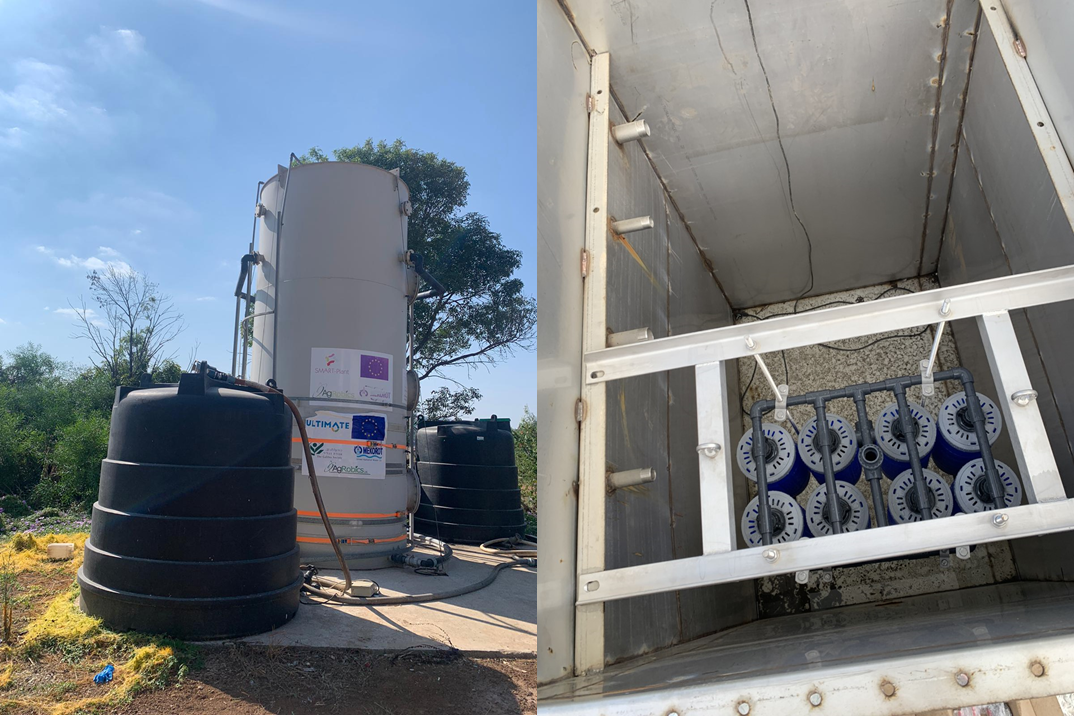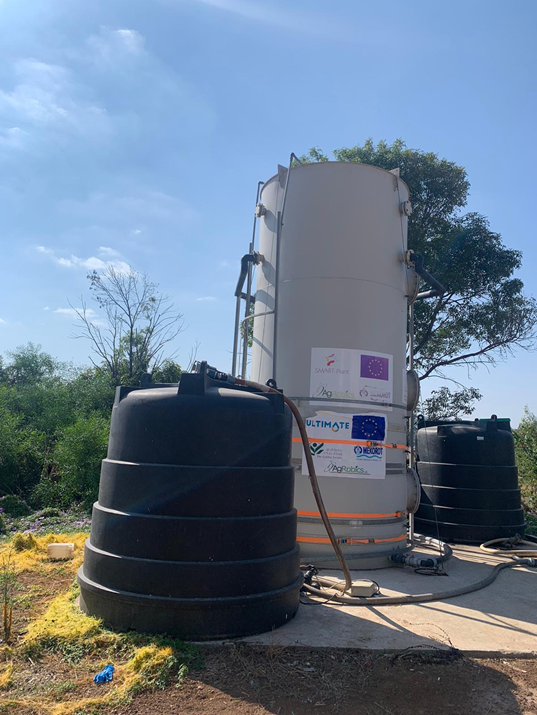
Unique selling points
- Biogas production as renewable energy
- Reduction of high organic loading rates to the activated sludge system
- High process stability due to the immobilised biofilm matrix
Description of the technology
The immobilised high rate anaerobic reactor, also known as advanced anaerobic technology (AAT) can be applied in wastewater treatment plants (WWTP) as a pre-treatment. It reduces the organic load, which leads to savings in energy demand/costs in the downstream aerated tank. Due to the anaerobic conditions in the reactor, biogas is formed and can be recovered, as explained in detail in the technology factsheet anaerobic digestion. The recovered biogas is a renewable energy source that can be reused at the wastewater treatment plant.
In the AAT, the microorganisms are immobilized and grow in a “bio-stabilised” polyurethane-based matrix. This matrix has a large surface area to enable biofilm formation. This structure protects the microorganisms against washout and contributes to a stable process operation (Massalha et al. 2015a, 2015b; Sabbah et al. 2016). The system can be applied either after the primary clarifier or directly without a primary clarifier (Fig. 1). Sabbah et al. (2016) showed that the microorganisms adapt well to the corresponding conditions.
In the case studies of UItimate, the agro-industrial sector causes high organic load events depending on the season. In Karmiel, the AAT shall reduce those high load events especially resulting from discharged olive mill wastewater. Fig. 1 shows the point of application of the AAT in Karmiel. In Shafdan, the wastewater composition is slightly different. Wineries, dairies and olive mills discharge their wastewater to the WWTP, where it is jointly treated with municipal wastewater. For the pilot system, those wastewaters are collected separately and mixed in a buffer tank with municipal wastewater prior to the treatment in the AAT (Fig. 2). The pilot system consists of an AAT reactor combined with a novel activated carbon anaerobic membrane bioreactor (AC/AnMBR) that is positioned downstream to the AAT (Fig. 2, Fig. 4). Here, an immobilized biomass with activated carbon fixed foam instead of granular biomass is used and offers a promising approach for fouling reduction, which is unexplored yet within AnMBR technologies. In the case ammonium and phosphate shall be removed from the effluent of the AnMBR, further treatment is necessary. Therefore, the effluent of the AnMBR is sent to the municipal WWTP.
Flow scheme of the technology
Fig. 1 shows the principal of an immobilised anaerobic high rate reactor also known as AAT and the position in a wastewater treatment plant as a pre-treatment step upstream to the activated sludge system in Karmiel.
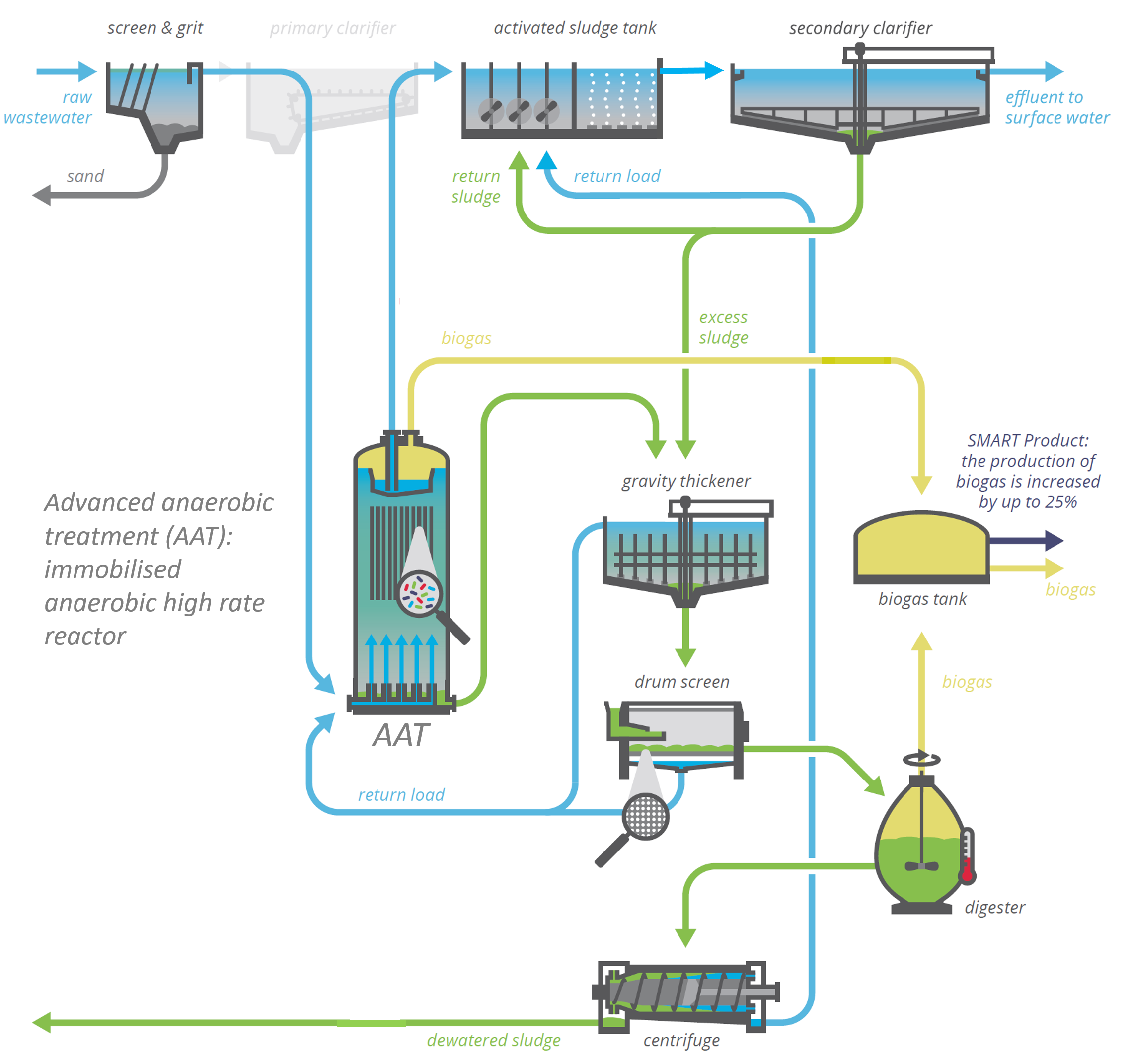
Fig. 1 Principal of the application of an immobilized anaerobic high rate reactor in a wastewater treatment plant (modified after Sabbah and Conzelmann 2020)
Fig. 2 shows the simplified flow scheme of the advanced anaerobic treatment (ATT) activated carbon anaerobic membrane bioreactor (AC/AnMBR) system in Shafdan.

Fig. 2 Principal of the application of an immobilized anaerobic high rate reactor (AAT) in combination with an activated carbon anaerobic membrane bioreactor (AC/AnMBR)
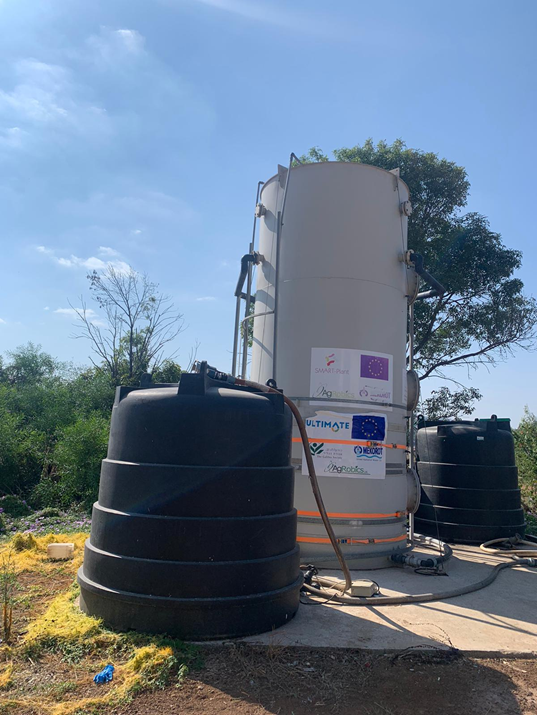
Fig. 3 Picture of the immobilised anaerobic high rate reactor at the wastewater treatment plant in Karmiel
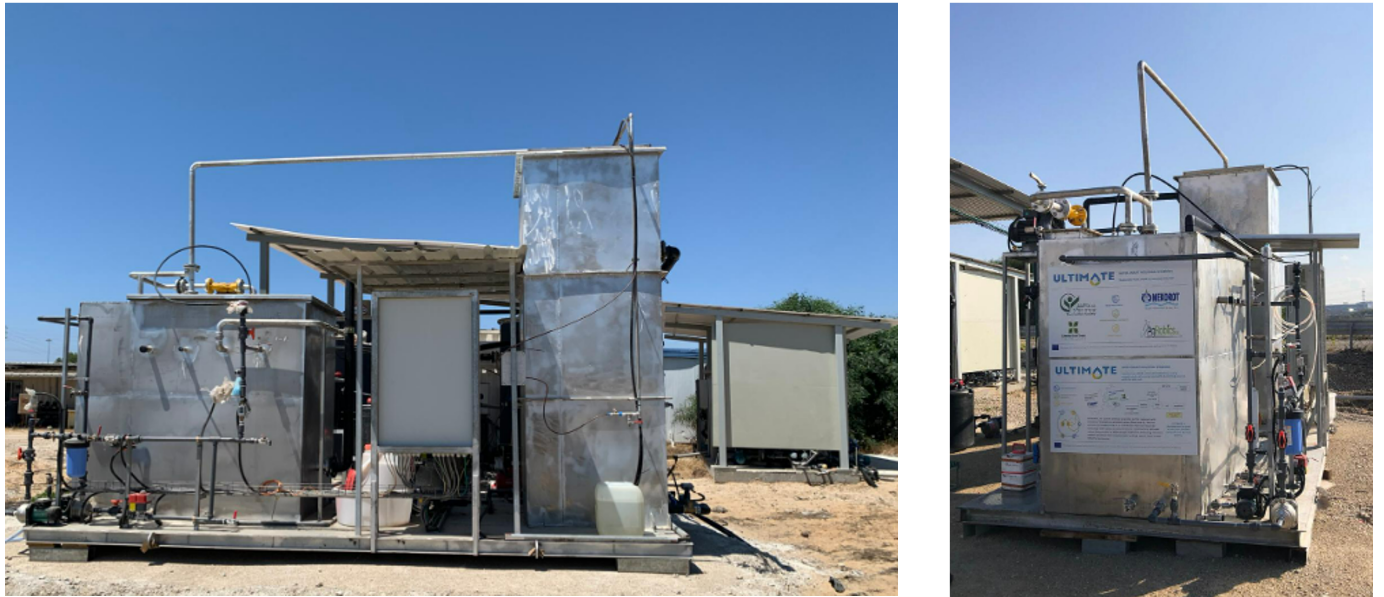
Fig. 4 Picture of the AAT combined with the AC/AnMBR at the wastewater treatment plant in Shafdan
Synergetic effects and motivation for the implementation of the technology
- Reduction of high organic loading rates upstream to the activated sludge system
The AAT can treat high organic loads, e.g. 11 kg COD/(m³*d), resulting from different industries, such as the olive processing industry (Sabbah et al. 2016 and Massalha et al. 2015a). Hence, it is a suitable pre-treatment for wastewaters containing high organic loads. The high organic loads are anaerobically biodegraded, enabling their recovery as biogas in the AAT. Thus, the subsequent activated sludge system can be protected against overloading, receiving lower organic loading rates, leading to a lower aeration demand and saving energy.
- Biogas production as a renewable energy
In the AAT, organic matter is anaerobically biodegraded. Microorganisms produce valuable biogas containing methane as a renewable energy source. Hence, instead of only consuming energy for aeration in a conventional activated sludge system without anaerobic treatment, an additional pre-treatment such as the AAT produces energy.
- High process stability due to the biofilm matrix in the reactor
Mashsalha et al. 2015a showed the stability and tolerance of continuous-flow bioreactors inoculated with anaerobic methanogens using dried granular biomass immobilized in an activated carbon-enriched hydrophilic polyurethane foam. Organic loading rates of 6.25 and 10.94 kg COD/(m³∗d) were tested using a glucose-based synthetic mixture. The effect of an instantaneous shock load of phenol (5g/L for three days), and of phenol inclusion in the feed (0.5g/L) were also successfully tested. Activated carbon-enriched foam contributed to a high process stability and shortened the microbial adaptation time for 0.5g/L phenol that was fed continuously.
Technology requirements and operating conditions
For the immobilised anaerobic high rate reactor, a polymer-based foam is used to enable a stable microbial activity and hence, a robust biogas formation process (Massalha et al. 2015b).
Tab. 1 Typical ranges for operating parameters (COD: chemical oxygen demand)
|
Parameter |
Units |
Min |
Max |
Reference |
|
pH |
- |
6.8 |
8.5 |
|
|
Temperature |
°C |
15 |
40 |
|
|
Hydraulic retention time |
h |
2.4 |
|
|
|
Organic loading rate |
kg COD/(m³*d) |
1.5 |
11 |
Key performance indicators
Depending on the types of substrates, the biogas and methane yields vary. For sewage sludge, for example, the methane yield ranges between 0.18 and 0.3 m³ CH4/(kg VS) depending on the sludge type such as primary sludge, excess sludge or a mix of both. Tab. 3 shows average values for the different sludge types and waste(water)s.
Tab. 2 Average methane and biogas yields for different types of sludge/waste(water)
|
Parameter |
Units |
Methane yield |
Biogas yield |
References |
|
Primary sludge |
m³/(kg VS) |
0.3 |
0.52 |
|
|
Excess sludge |
m³/(kg VS) |
0.18 |
0.3 |
|
|
Mixed sludge
|
m³/(kg VS) |
0.25 0.30 |
0.42 0.48 |
|
|
Olive mill wastewater/ solid waste |
m³/(kg VS) |
0.14-0.15 |
0.24-0.26 |
|
|
Slaughterhouse waste |
m³/(kg VS) |
0.3 |
0.7 |
Deublein et al. 2008 |
Links to related topics and similar reference projects
|
Process/technologies |
Reference |
|
ATT in Karmiel/Shafdan |
|
|
Anaerobic membrane bioreactor |
|
|
Electrostimulated anaerobic reactor |
Case Study applying the technology
Publications
- Afif, R., Pfeifer, C., Biochemical methane potential of three-phase olive mill solid waste: Influence of temperature and supplemental enzymes, 2022
- Deublein, D., Steinhauser, A., Biogas from waste and renewable resources, 2008
- Jäkel, K., Mau, S., Grundlagen der Biogasproduktion, Managementunterlage „Landwirtschaftliche Biogaserzeugung und -verwertung“, 2003
- Massalha, N., Brenner, A., Sheindorf, C., Haimov, Y., Sabbah, I., Enriching composite hydrophilic polyurethane foams with PAC to enhance adsorption of phenol from aqueous solutions, 2015
- Massalha, N., Brenner, A., Sheindorf, C., Sabbah, I., Application of immobilized and granular dried anaerobic biomass for stabilizing and increasing anaerobic bio-systems tolerance for high organic loads and phenol shocks, 2015
- Remy, C., Diercks, K., Best practices for improved sludge digestion, Deliverable 3.1, 2016
- Sabbah, I. and Conzelmann, L., Factsheet AAT, 2020
- Sabbah, I., Massalha, N., Saliba, A., Compositions of matter and uses thereof in the treatment of waste materials, 2016

